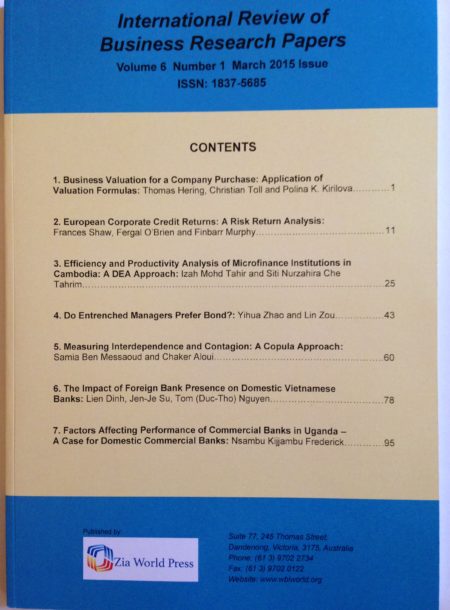The Environmental Kuznets Curve and Trade Openness: The Case of South Asian Countries
Nazia Zaman Chowdhury and Sakib Bin Amin
In the recent decades, the relationship between environmental problems and trade remains the most controversial topics for the economic literature. When trade increases, the consumption of fuels also increases which are heavily used in generation of energy, transport and industry. A large amount of population uses the small area of arable land to cut down trees for energy, as a result, carbon emissions increases. So, the aim of this paper is to examine the relationship between trade openness, GDP growth, population and carbon emissions in case of South Asian countries (Bangladesh, India, Pakistan and Sri Lanka) by using panel data over the period of 1980-2014. Panel unit root test, panel co integration, panel granger non-causality test, panel VECM test and DOLS estimator has been used to analyze the association between carbon emissions and selected macro-economic variables. The result of panel unit root test shows that variables are stationary at the first difference. The Johansen co-integration test reveals that all variables are co-integrated in the long run. In Panel Granger non-causality test, the unidirectional causality exists running from GDP growth and population to carbon emissions, whereas, trade openness does not cause carbon emissions in the long run. On the other hand, panel VECM results reveal that trade openness and population has no causal link with carbon emissions, but GDP causes carbon emissions in the short run. The result obtain from DOLS estimator shows the negative impact of trade openness and GDP growth on carbon emissions, however, population has positive impact on carbon emissions. Lastly, overall results do not show the presence of U-shaped Environmental Kuznets Curve (EKC) in Bangladesh, India, Pakistan and Sri Lanka. The proper policies should be taken to reduce the carbon emissions and improve trade situation.

